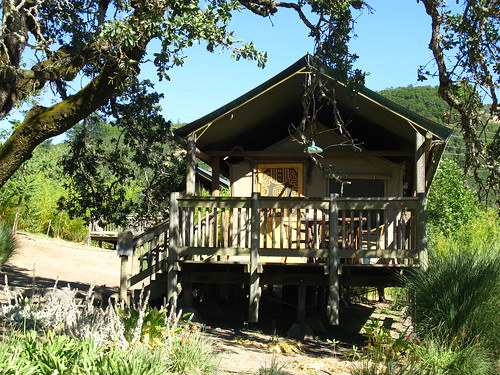
These are the tent-cabin accommodations at Safari West, a 400-acre wildlife preserve and breeding facility in wine country.
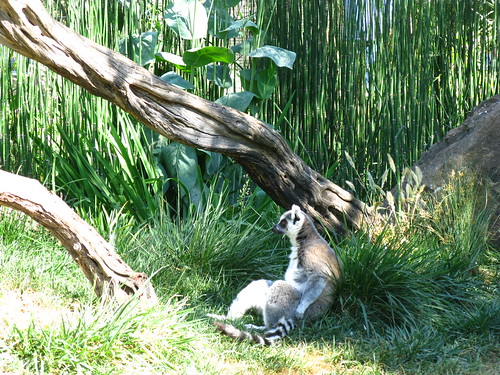

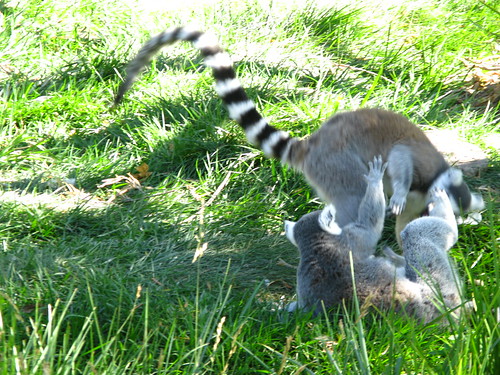
We are not zoo-goers. Seeing wild animals in captivity is always a little sad. Unfortunately, animals in the wild, and even in nature preserves, are dying off at alarming rates due to poaching, habitat loss, and other threats. If it's captivity or nothing, I guess I'll take captivity--at least when the captivity is 400 acres of open space with a commitment to promote clean living and healthy reproduction.
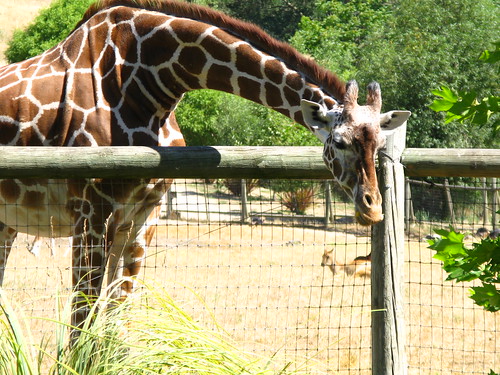
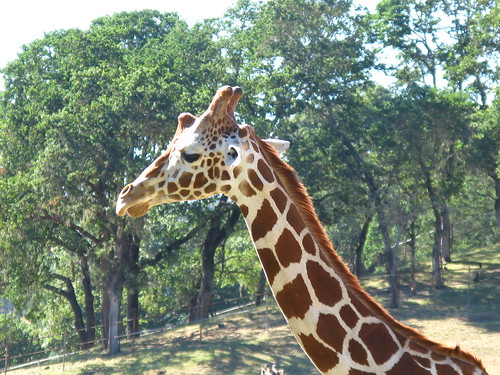

Not all the animals share the same open space, but many of the ungulates did.
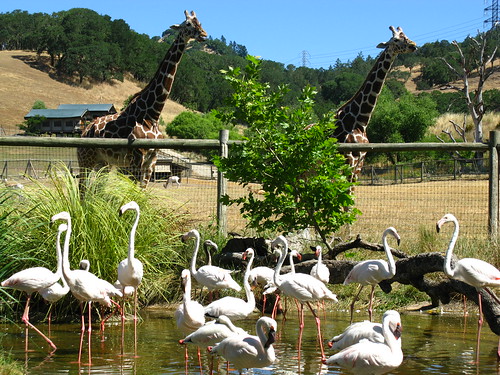
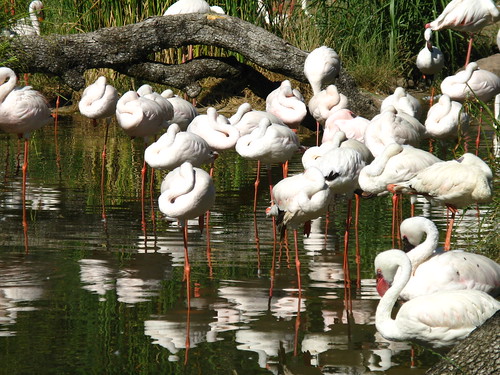
Most of the visit happens on this Korean War-era safari truck.
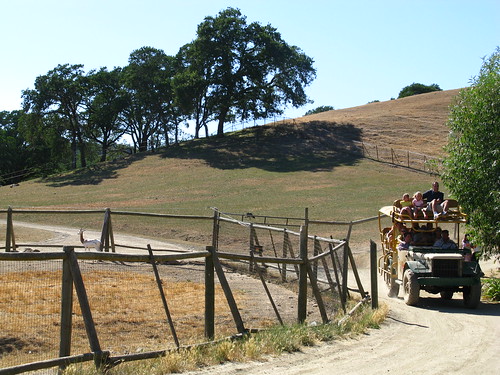
There was no touching of the animals or getting off the truck--which is how I like it. The tour guide identified all the animals for us and gave us tidbits. I paid attention, but did not take many mental notes. I took pictures and enjoyed the ride instead. (There were many more animals than you see here. A lot of the pictures didn't turn out well. Read Silke Tudor's lyrical account of her visit here.)
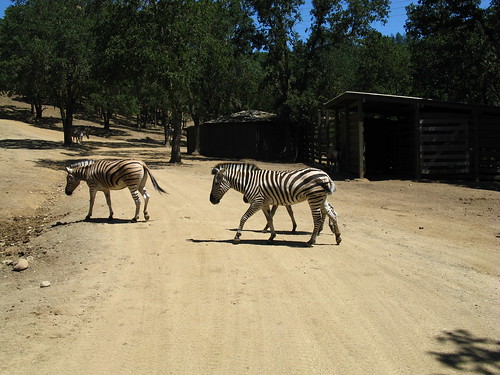
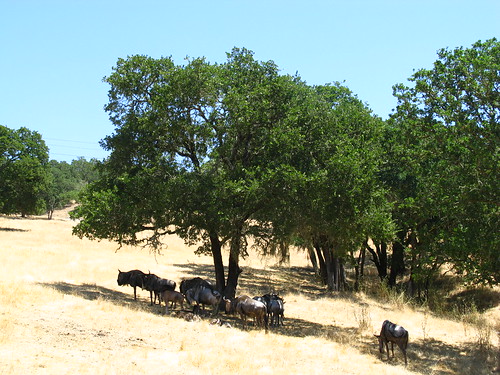
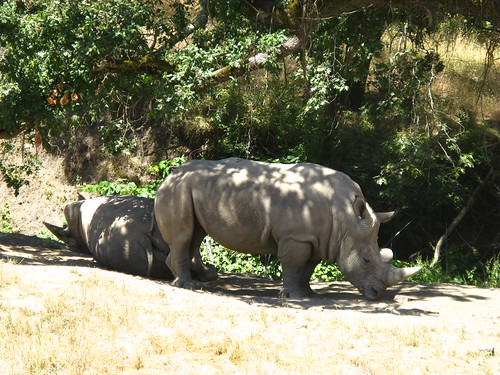
The guys below are Cape Buffalo, ornery creatures considered to be among nature's most fearsome animals. They were recently made famous in this YouTube video where a herd of them drive off a pride of lions

The animals are used to seeing the safari truck and most of them reacted to it with indifference. However the ostriches were more extroverted.
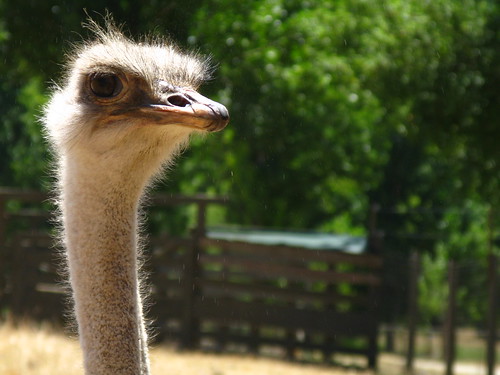
We saw many youngsters


and a few old characters.
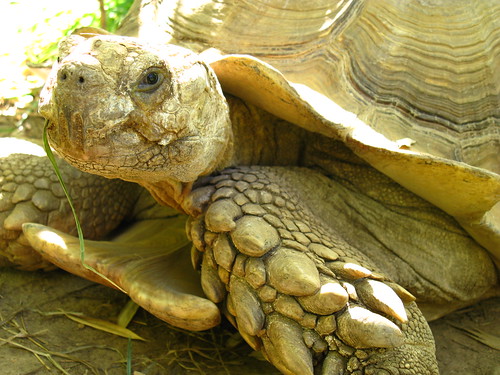
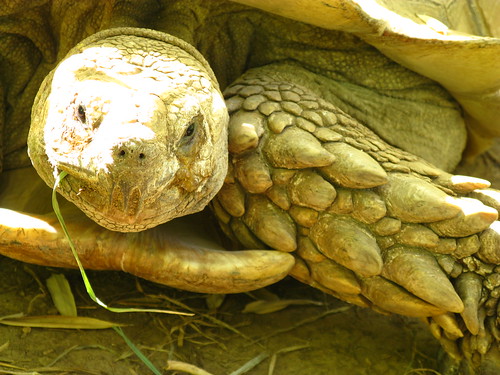
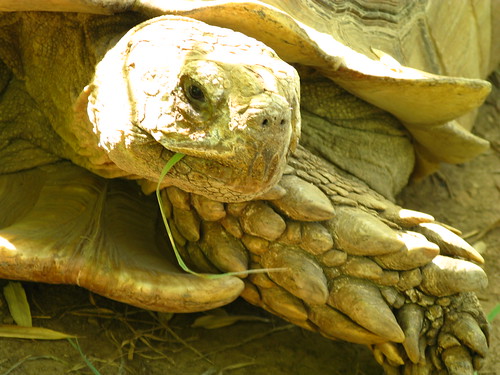

8 comments:
i want to sleep there!!!! what an awesome place! very cool.
Very cool. I had no idea there was anything like this up here. The pictures remind me of the San Diego Wild Animal park a bit - that's always been my favorite "zoo" type place - it's similar in that it's supposed to be a more natural setting - so the animals can roam around much like they would in their wild habitat (less predators in the same area) vs. in "cages" or small exhibits. Of course you can't sleep amongst them there - so that makes this something worth checking out!
Oddly enough, friends down here in So. Calif spent the 4th picnicking in the old LA Zoo, the abandoned zoo where you can wander through the empty, doorless exhibits built years ago by the WPA. Sad that only captivity may be the answer for some of these animals. Thanks for the look at this interesting place -- and that Cape buffalo v. lion/croc video which I hadn't seen.
No touching of animals or getting off the truck would be my choice, too. Even with the gates and fences, your photos bring to mind scenes from cool old movies like "African Queen" and "Hatari!"
Very interesting place, Chuck.
Annie at the Transplantable Rose
Hi Chuck,
It's interesting that I happened upon your blog, because I happen to be an organic chemist as well, down in San Diego.
I found your blog via a Google search for germination of Bladderpod (isomeris arborea). You showed a picture of some seeds you germinated on one of your old posts several years ago. I'm wondering if you did any treatment (stratification, scarification, etc) to get the seeds. I just collected some and I'm hoping to germinate them and set them out in the backyard (I'm transitioning to mostly natives).
Thanks for you help!
Mark
Hi Mark, I don't remember for sure, but as I recall the Isomeris seeds are quite hard...? If that's the case, I tend to treat all hard seeds the same way: Drop them in ~90 deg C water, and let them soak while the water cools to RT. Then sow in sterile mix.
(Another thing I've done before is to nick hard seeds with nail clippers, just to crack the coat a little bit, followed by soaking in RT water.)
Diurnal temperature fluctuation tends to promote germination with many Cal natives. If you can give the seed flat (or whatever container you sowed them in) ~12 hours of warm in alternation with ~12 hours of cool (what it's like in California in the fall--warm days, cold nights), that tends to help. Be sure to keep the seeds moist while you wait for them to germinate.
If the seeds are not hard, I would soak them in RT water overnight, then sow in sterile mix and provide diurnal temperature fluctuation as above.
As I recall, my Isomeris germination rates for were not great, but I did get a few plants out of it. Good luck.
Thanks, Chuck. Awesome Africa pics, it looks amazing!
Mark
Very nice safari photos! This place is going on my To Go list. Thanks!
Post a Comment